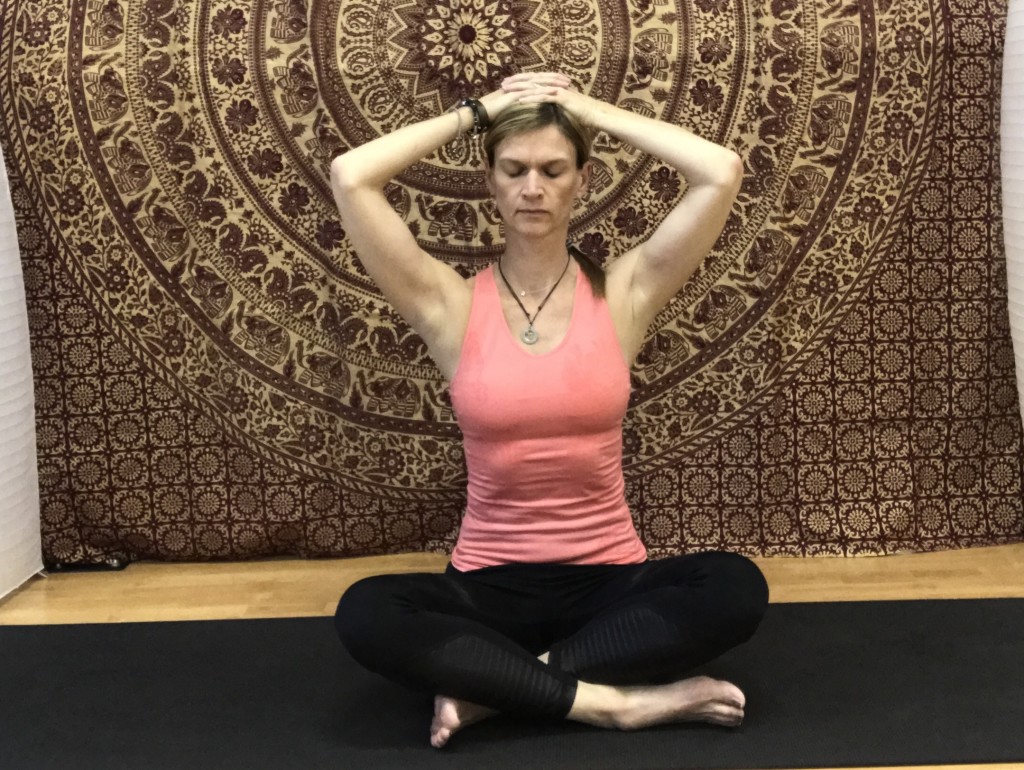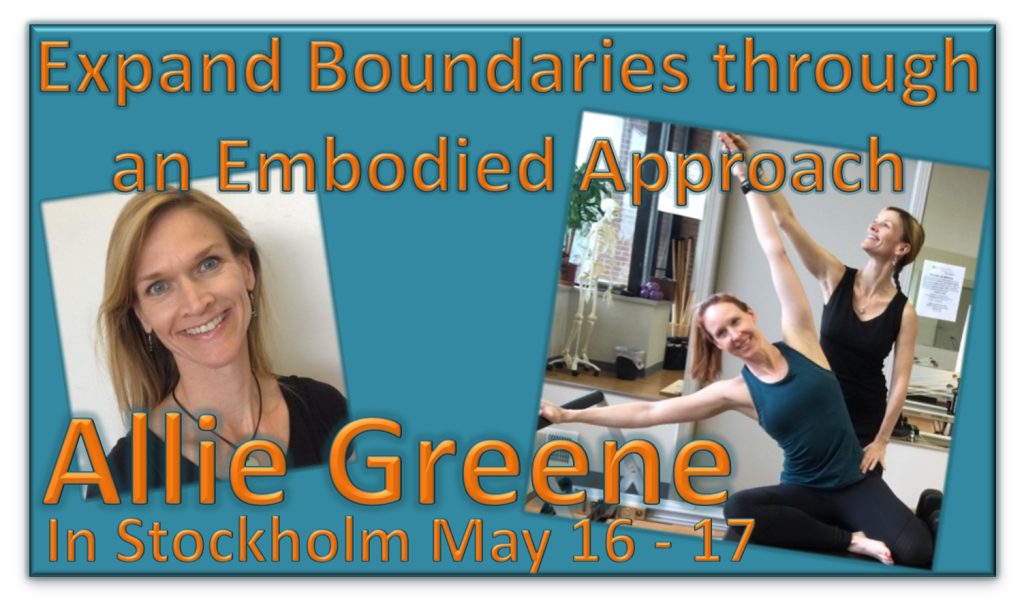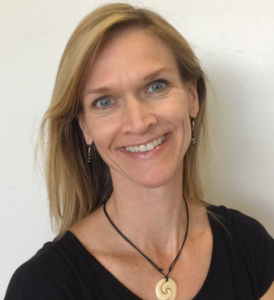Wednesday, March 4, 2020
“Embodied” Pilates
by Allie Greene
Embodiment is being internally aware as a body rather than an outside observation of the body. It is a subjectively felt sense of ourselves. It is the “being” rather than the “doing”. It is within the process of embodiment where we can begin the knowing of our self. We reunite with our cellular resonance and from this source create authentic perception and perspective of self, others and the world at large.
EmbodiPilates explores and applies embodied anatomy, BNP (basic neurocellular patterns), and somatic practices to the Pilates repertoire. BNP is the work of Bonnie Bainbridge Cohen who is the founder of Body Mind Centering. I was introduced to this work by my teacher, Lisa Clark, who has worked and created alongside Bonnie for the past 40 years as well as creating her own incredible body of work in the fields of yoga, somatics, and body-mind work. The experiencing of both Bonnie’s and Lisa’s work changed how I view the body and ultimately how I experience myself and how I want to teach.
I look at the world and I see increasing disembodiment and the effects of that on our culture. Joseph Pilates saw the early stages of mass disembodiment brought about by industrialization. This is not to say that industry and technology are bad, but too much of anything never ends well. His book, Return To Life, is in many ways about embodiment. He not only created an exercise system to uniformly build the body, he promoted brushing the skin in the shower, getting outside and communing with nature, and enjoying the stimulating effects of cold weather. He wanted to help people return to themselves. He wanted them to be in touch with their body. He already knew the value of honoring the body and the dangers that the fast-paced, modern-day lifestyle posed – not just for the physical body, but for the mind and spirit as well. This is evident in so many of his famous quotes, like this one:
Moreover, such a body freed from nervous tension and over-fatigue is the ideal shelter provided by nature for housing a well-balanced mind that is always fully capable of successfully meeting all the complex problems of modern living.
He also understood the difference between disembodied exercise and mindful movement. “Contrology is not a fatiguing system of dull, boring, abhorred exercises repeated daily ad nauseum.”
EmbodiPilates expands our experience of our body and how we can approach our movement experience of Pilates. We can deepen our relationship to our self. We can embrace the journey of living. We can grow our responsiveness, compassion, and self -agency through movement. To quote the wonderfully insightful Brené Brown, “Strong back, soft front, wild heart.”
Somatic Practice 1
Basic Neurocellular Patterns of Yield and Push from the head then the tail. This is first established in utero and continues to develop after birth.

To begin to explore this pattern, sit in a comfortable position. Place both hands on the crown of the head. Close the eyes. Notice the ground underneath you. Allow the body to soften and yield towards the ground. Notice the sensation of spreading and deepening awareness of the gravitational pull. Keeping the jaw and tongue soft and gently push the crown of the head into the hands. Take your attention to your spine. Notice the condensing sensation. Follow it sliding downwards, and saturating the front, back, and sides of the spine. Are there any blank spots or holding? Can you move into those areas? Maybe add a little sway or soft jiggle. Follow this condensing down to the pelvic floor. Then begin yielding again. Pause and notice how you feel. What words might describe your experience?
Somatic practice 2
Basic Neurocellular Patterns of Reach and Pull from the head and tail applied to a Half Roll Down.

To experience Spinal Reach and Pull of the head, sit with the legs bent, heels in line with the sitz bones, the hands softly supporting the backs of the thighs. Close the eyes. Initiate a soft reach of the crown of the head forward into space. Follow the sensation of elongation down the spine to the tail. Notice if there is a sense of pulling in as you are reaching out – like an energetic tether back to your center.
Image
Reach and Pull of the tail is initiated with the tip of the coccyx. This energetic sensation transitions into movement as the tail leads the spine into a half roll down. To return up and maintain a Curve, both the head and tail can reach forward.
As you repeat these patterns, you may find there are certain places that consistently need more attention. Moving from the tail rather than the sacrum/pelvic halves might be an awakening experience for many. The reach through the tail also creates a response through the muscles, namely a release through the hip flexors due to deeper engagement of muscles closer to the spine (Body-Mind Centering refers to this as “muscle currenting”). Pause and notice how you feel after this practice. What words might describe your experience?
Applying Spinal Yield and Push and Reach and Pull to the Roll Up

To apply the seated experience of Yield and Push, begin seated. If the hamstrings are over recruiting, bend the knees. Reach through the feet. Yield and Push from the tail.

This progresses into a Reach and Pull of the Head. This brings the spine into a C Curve. The continuation of the reach moves into the arms.

The tail begins to reach and leads the spine down. The reach moves out into the legs. Keep the reach all the way down. As gravity moves down through the body, the body condenses towards the lowest point creating support. I use the sensation and image of the body being a bag of sand. The sand keeps sliding and gathering to the lowest point.

After arriving down to the ground, reach the arms over head. Feel the condensing of the back body towards the ground and the expanding reach and pull of the arms and legs. Wide back body, soft front body, long side bodies. Initiate the roll up with the reach through the tail and feeling the body condensing towards the lowest point. Ground Reaction Force sends the body up. Reach into space, return to the C Curve. Yield and Push through the tail to sit tall.

Here is an example of the soulful exploration Allie uses in her own workout.
(The workshop is not about what you see in the video, but it will have the same depth and rigour.)

Allie Greene
Allie holds a 500 RYT with EmbodiYoga® and Somatics and the Yoga Alliance, as well as a NCPT (PMA-CPT) with the Pilates Method Alliance. She is a Program Director for the 200TT for EmbodiYoga® and Somatics with Lisa Clark. She is the Director of Education and a Master Trainer for Tracey Mallett’s programs bootybarre®, bbarreless®. As a somatic movement educator she offers a 200TT and workshops in EmbodiYoga®, Cross Training for Technique: Experiential Anatomy, Somatic Exploration, Injury Prevention for Dancers, an Embodied Anatomy Series, and EmbodiPilates.
She holds a BA in Sociology and Performing Arts from La Roche University and danced professionally with the Cleveland/San Jose Ballet and Pittsburgh’s LABCO.
She is the owner of Equilibrium Pittsburgh Movement Studio in Pittsburgh, PA.

